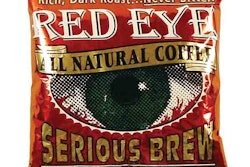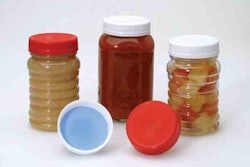No, I mean so-called "intellectual property," like patents, trademarks, trade dress, trade secrets, and copyrights, along with their proper creation, maintenance, and protection. Such things are key to many businesses. Sometimes, the value of your brand, or the special knowledge protected by your patents or trade secrets, is the very essence of what gives your company a competitive advantage.
This month, we look at intellectual property in general, and we hear from three experts in the field on special considerations for packaging makers and users. We include a special look at a recent United States Supreme Court decision that might make it harder to patent new inventions.
Because packaging involves shapes and materials as well as labeling, the whole range of types of intellectual property come into play. Patents on functional inventions for packaging structures or machinery or manufacturing techniques are common, but so are so-called design patents on ornamental features of a package. If your package or its design is protected by a patent, your competitors are prohibited from making the identical package or design. The name or distinctive color scheme and appearance of a package label, especially on consumer products, can be afforded trademark protection if it becomes associated with one company in particular, and the same goes for trade dress, which is a reference to the total look of a package.
Your trademark or trade dress-protected package or label cannot legally be copied by a competitor. Copyright protects original writings, including unique label content, from being stolen by others. And trade secrets, of course, are valuable secrets you protect from disclosure to others.
I asked three of the top intellectual property lawyers in the nation for some comments about intellectual property as it relates to makers and users of packaging.
Chicagoan Jack Fassnacht noted that trade dress is an especially important area for packaging as such, since trade dress protection keeps others from copying what he calls "the overall non-functional appearance of a product or package that is either inherently distinctive or over time has become associated in the minds of consumers with a single source." Because trade dress "can include features such as the color and shape of the package and any graphics used on the package," Fassnacht says its essence is really the overall package design. He adds that trade dress need not be registered with the government, unlike patents, trademarks, and copyrights.
However, Fassnacht cautions, it’s the creative and unique features of your package that count as protect-able trade dress. He says, "Trade dress can be the hardest form of protection to enforce because package design is rarely inherently distinctive." In other words, a package often is shaped the way it is because of its function, so a competitor’s package that does the same thing is likely to look a lot like it and still not be a violation of your trade dress.
And although copyright is usually thought of as a protection for written materials, it also could protect the graphics on a package, and even the package itself as a three-dimensional work.
Again, though, a merely functional feature doesn’t justify copyright protection, says Fassnacht. "I once had a copyright registration application for a package design refused because the Copyright Office believed the package was merely a useful article with no design features separable from the package utility. In other words, to be copyrightable the package design must possess a minimum level of creativity separable from the package’s utility."
Mitchell J. Weinstein, also of Chicago, says patents are especially well-suited protections for the packaging industry, for the articles they make but also for how they are made. He reasons that "Utility patents protect the structural and/or functional aspects of an invention" for 20 years from the date of filing the patent application. New materials also could be protected through a utility patent, and so can methods for manufacturing, filling, or performing other functions.
Also, a design patent can be obtained to protect the actual shape of a package, so long as the shape is not functional and is sufficiently novel.
Weinstein points out that there are disadvantages to utility patent protection, in that "it can take a long time to obtain, and the cost [mostly legal fees, alas] could be quite high." Design patents are often quicker and cheaper to get, but they last only 14 years from the date of issue.
And speaking of patents, one prominent recent decision from the US Supreme Court could affect packaging makers and users.
First, some background: To get an invention patented, you have to prove three things: novelty, non-obviousness, and usefulness. And in that recent case, the Supreme Court noodled on what exactly is meant by "obviousness." When looking over a new invention, the government folks who issue patents, the Patent and Trademark Office, look primarily at the "prior art," that is, all the inventions that came before, whether in patents or otherwise. After all, you gotta look at the history of inventions in a particular field in order to judge whether a new one is novel and non-obvious.
Philadelphia intellectual property lawyer Hal Fullmer explains that in the recent case called KSR International Co. v. Teleflex Inc., the Supreme Court looked at the test used by the PTO and courts for determining whether an invention is obvious.
Under the pre-KSR test, the PTO could reject a patent application on the grounds that the invention was obvious in view of combinations of elements from more than one piece of prior art, but to combine those elements, they had to show that there was some "teaching, suggestion, or motivation to combine the references," says Fullmer.
In the KSR decision, while acknowledging that an invention is not proved obvious merely by showing that it is a combination of elements from various sources, the Supreme Court criticized the rigid application of the "teaching, suggestion, or motivation" test.
Even though the patent office still requires a reason for the combination of elements, some commentators have asserted that a court can reject a patent on the grounds that the invention is a predictable combination of elements found in multiple references (e.g. patents) used according to their normal functions, regardless of whether there was some teaching or motivation to combine those elements.
Fullmer says the KSR decision might well affect packaging companies, because packaging is a crowded field with lots of existing patents, and new packaging inventions often are combinations of known elements from different sources, or only slightly different from what came before.
"We must wait to see whether lower courts develop a doctrine based on KSR that is detrimental to crowded fields like packaging," Fullmer says, "but while awaiting case law to develop, an applicant for patent who is arguing over obviousness would be wise to consider the reasoning of KSR and the new wrinkles it introduced."
New developments in patent law and other intellectual property areas are bound to come now and then, but a central feature of the field will always be a need for the care and feeding of these valuable property rights.
Eric can be reached at [email protected], and visit his firm’s Web site at www.ericfgreenbergpc.com.

























